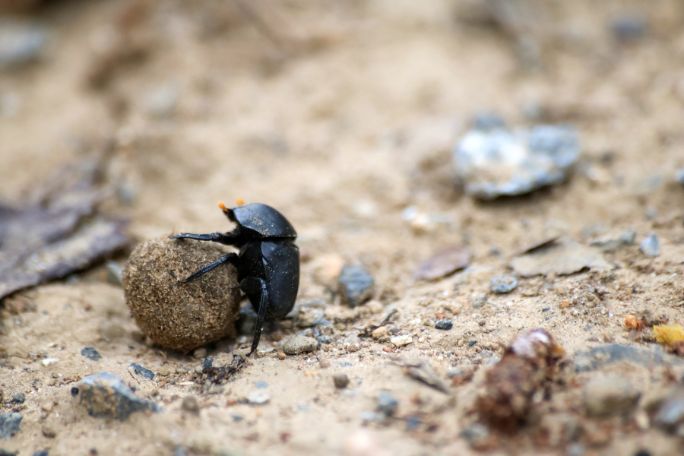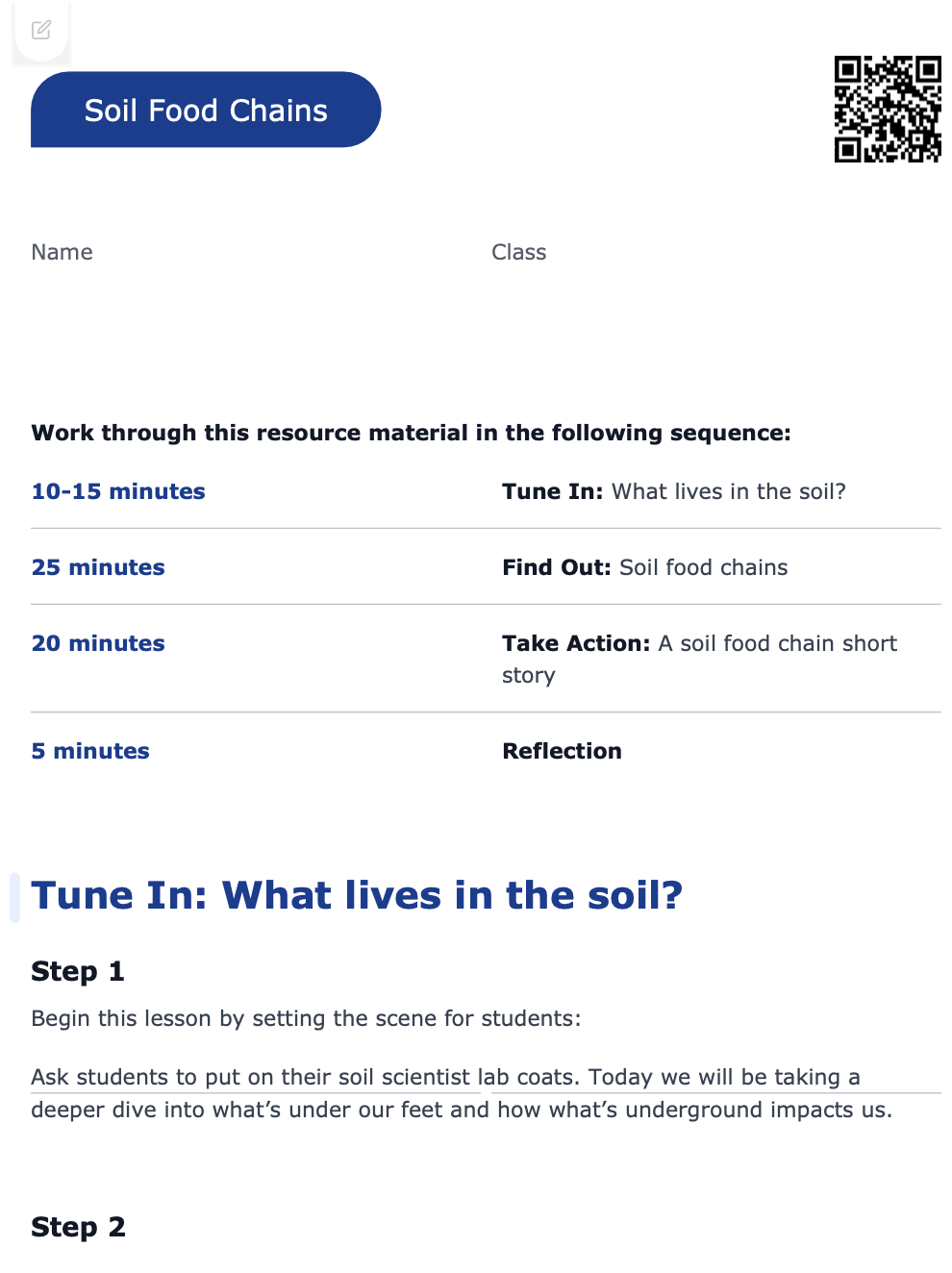Lesson summary
Students explore the relationships between soil organisms. They look at soil organisms and investigate how food chains can help illustrate the interactions between soil organisms. They create a short story to describe some of these interactions.
Learning intentions:
Students will...
- explore how food chains can be used to illustrate relationships in an ecosystem
- investigate soil organisms and food chains.
Success criteria:
Students can...
- list some of the organisms that might be found in the soil
- give examples of soil food chains using images and text.
Lesson guides and printables
Curriculum links
Select your curriculum from the options below.
Lesson details
Skills
This lesson is designed to build students’ competencies in the following skills:
- curiosity
- creativity
- communication
Curriculum Mapping
Content descriptions:
Australian Curriculum (v9.0) content descriptions - Year 4 Science
Students learn to:
- explain the roles and interactions of consumers, producers and decomposers within a habitat and how food chains represent feeding relationships (AC9S4U01)
- write and create texts to communicate findings and ideas for identified purposes and audiences, using scientific vocabulary and digital tools as appropriate (AC9S4I06)
Syllabus outcomes: Medium - oversee class discussions and support students in short story writing.
General capabilities: Critical and creative thinking, Literacy.
Cross-curriculum priority: Sustainability.
Relevant parts of Year 4 Science achievement standards:
Students identify the roles of organisms in a habitat and construct food chains. They communicate ideas and findings for an identified audience and purpose, including using scientific vocabulary when appropriate.
UN Sustainable Development Goals
Target 2.4: By 2030, ensure sustainable food production systems and implement resilient agricultural practices that increase productivity and production, that help maintain ecosystems, that strengthen capacity for adaptation to climate change, extreme weather, drought, flooding and other disasters and that progressively improve land and soil quality.
Target 15.3: By 2030, combat desertification, restore degraded land and soil, including land affected by desertification, drought and floods, and strive to achieve a land degradation-neutral world.
Resources Required
Additional Info
Level of teacher scaffolding: Medium - oversee class discussion and group tasks.
Special thanks to:

This lesson has been developed with the support of the Macdoch Foundation.
Cool's curriculum team continually reviews and refines our resources to be in line with changes to the Australian Curriculum.



Welcome back!
Don't have an account yet?
Log in with:
Create your free Cool.org account.
Many of our resources are free, with an option to upgrade to Cool+ for premium content.
Already have an account?
Sign up with:
By signing up you accept Cool.org's Terms and Conditions(Opens in new tab) and Privacy Policy(Opens in new tab).